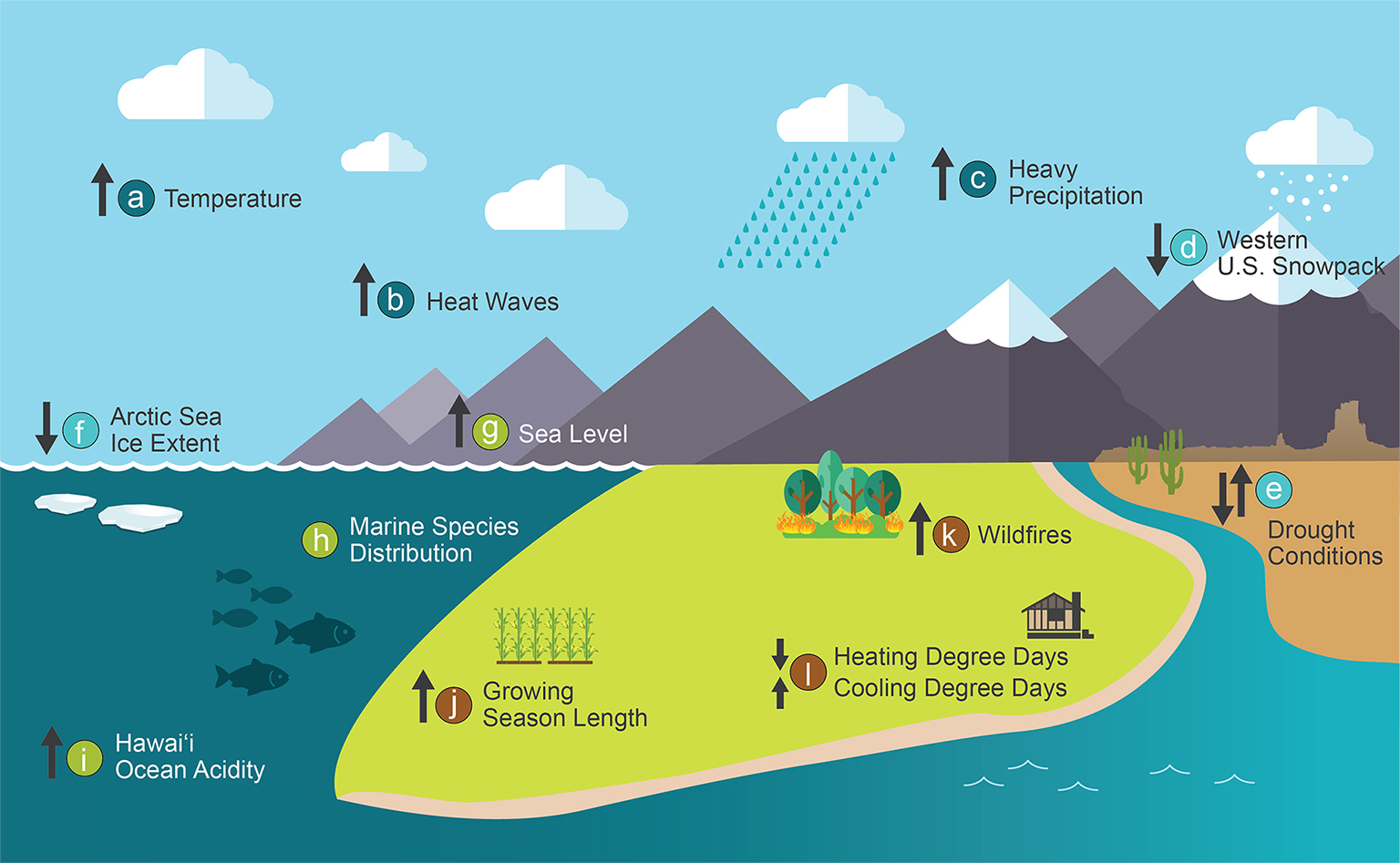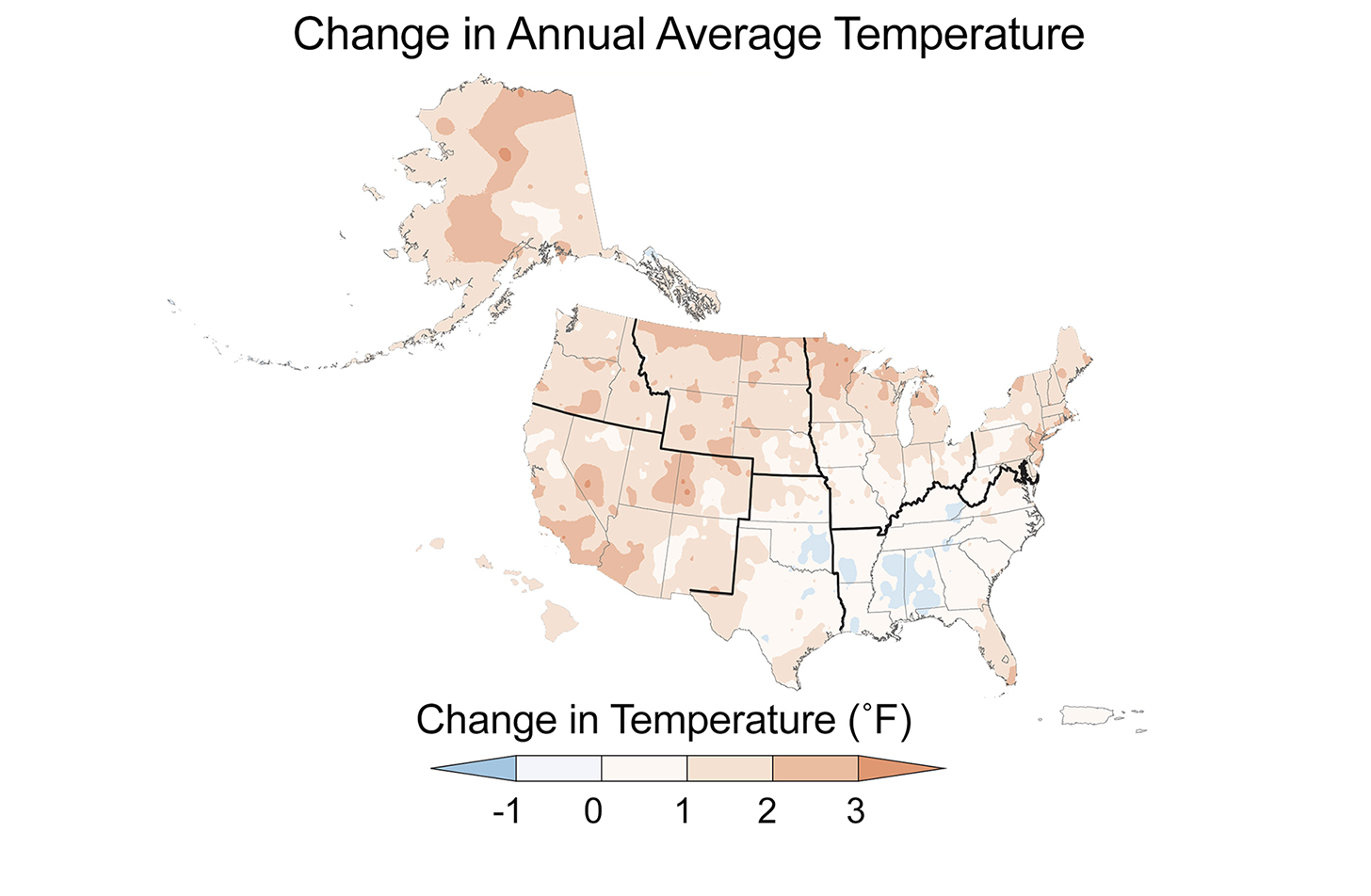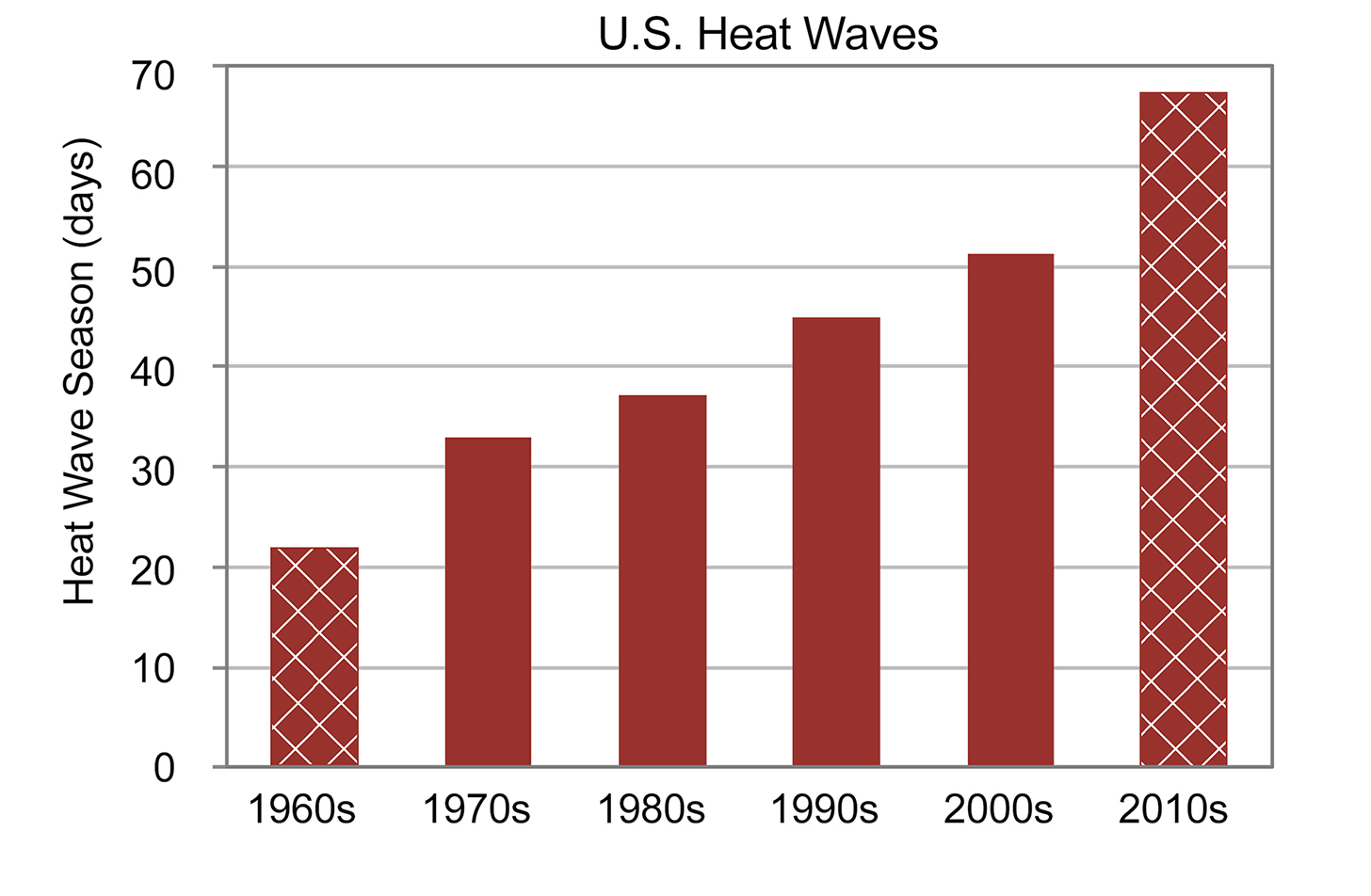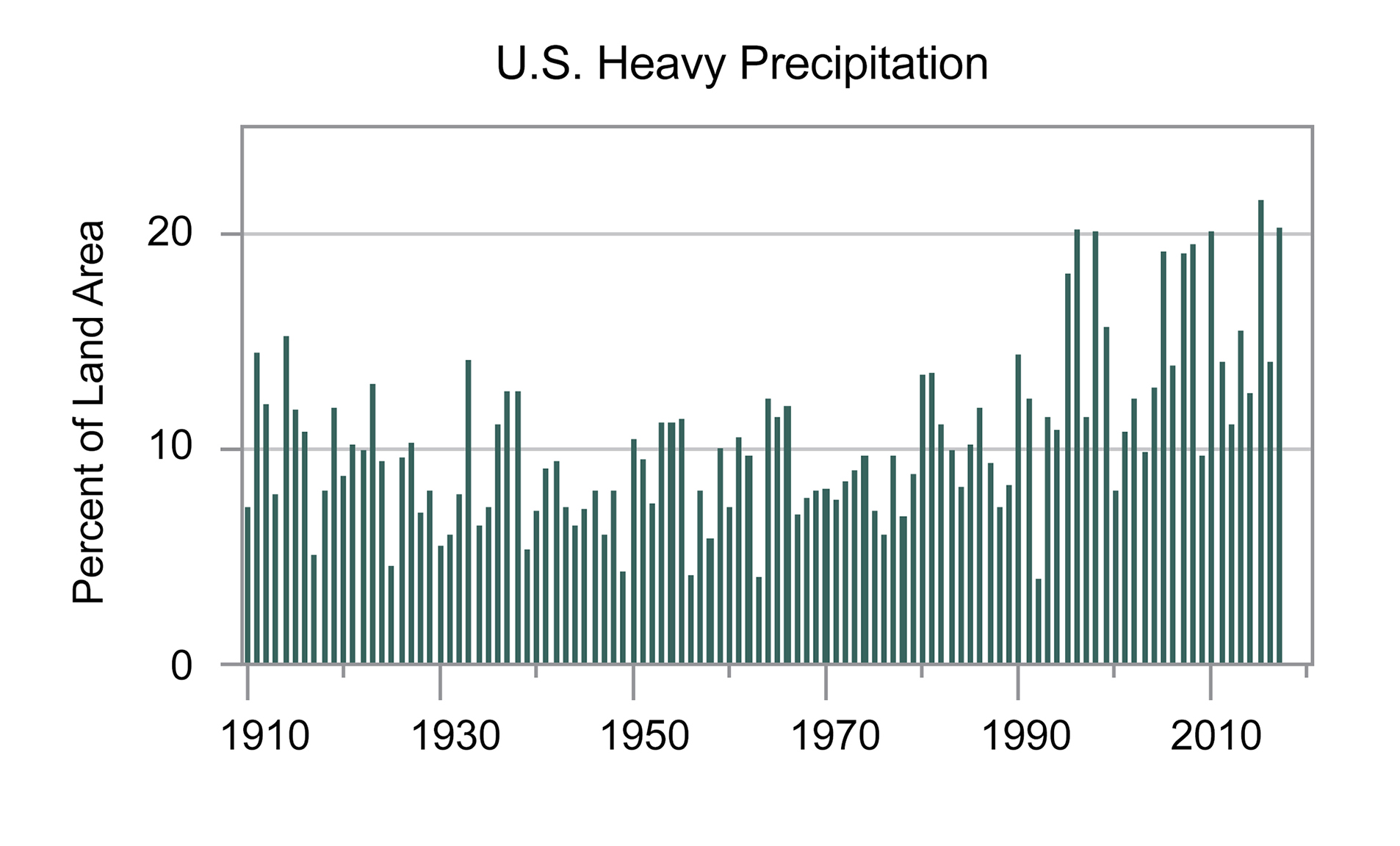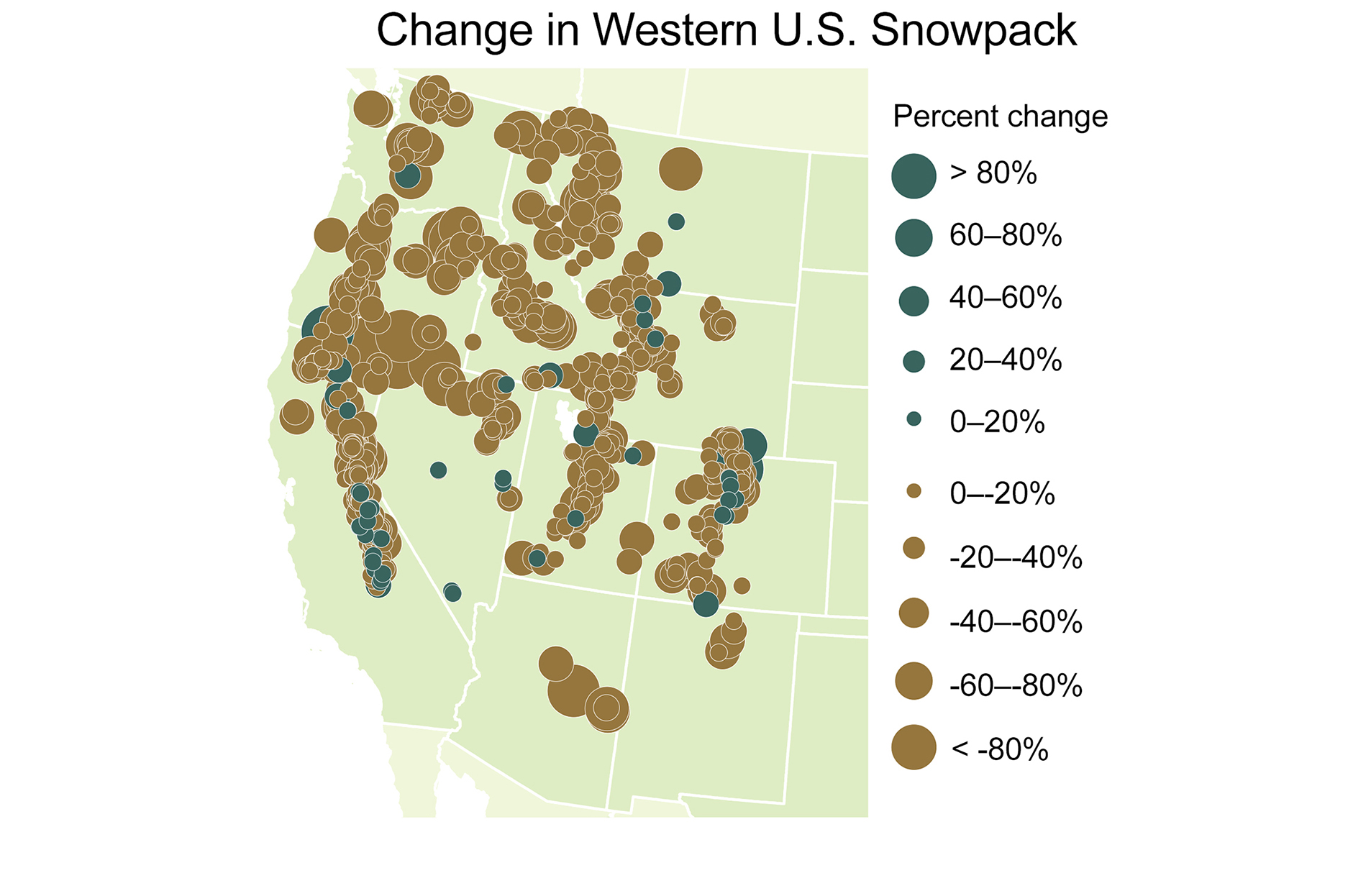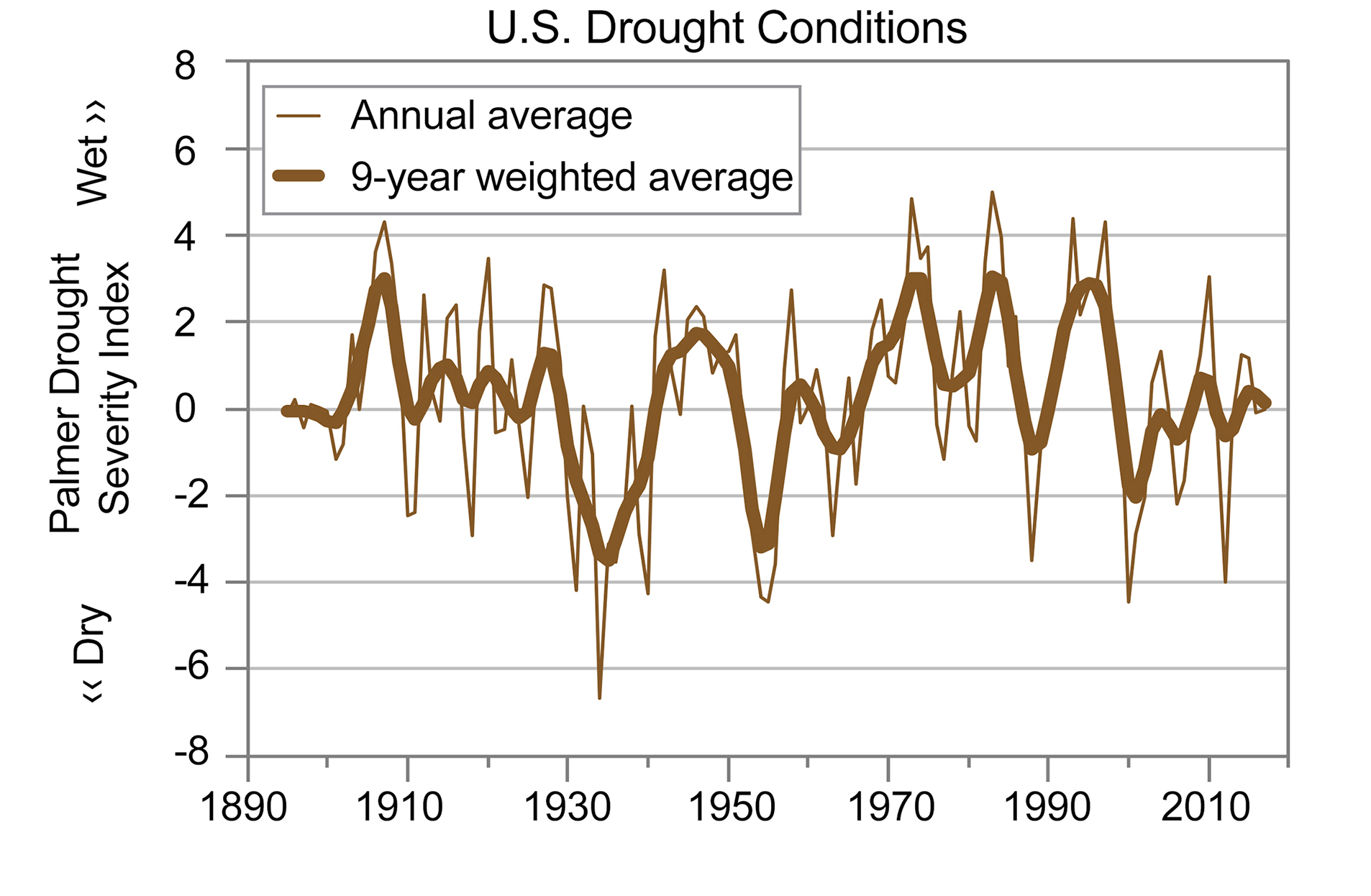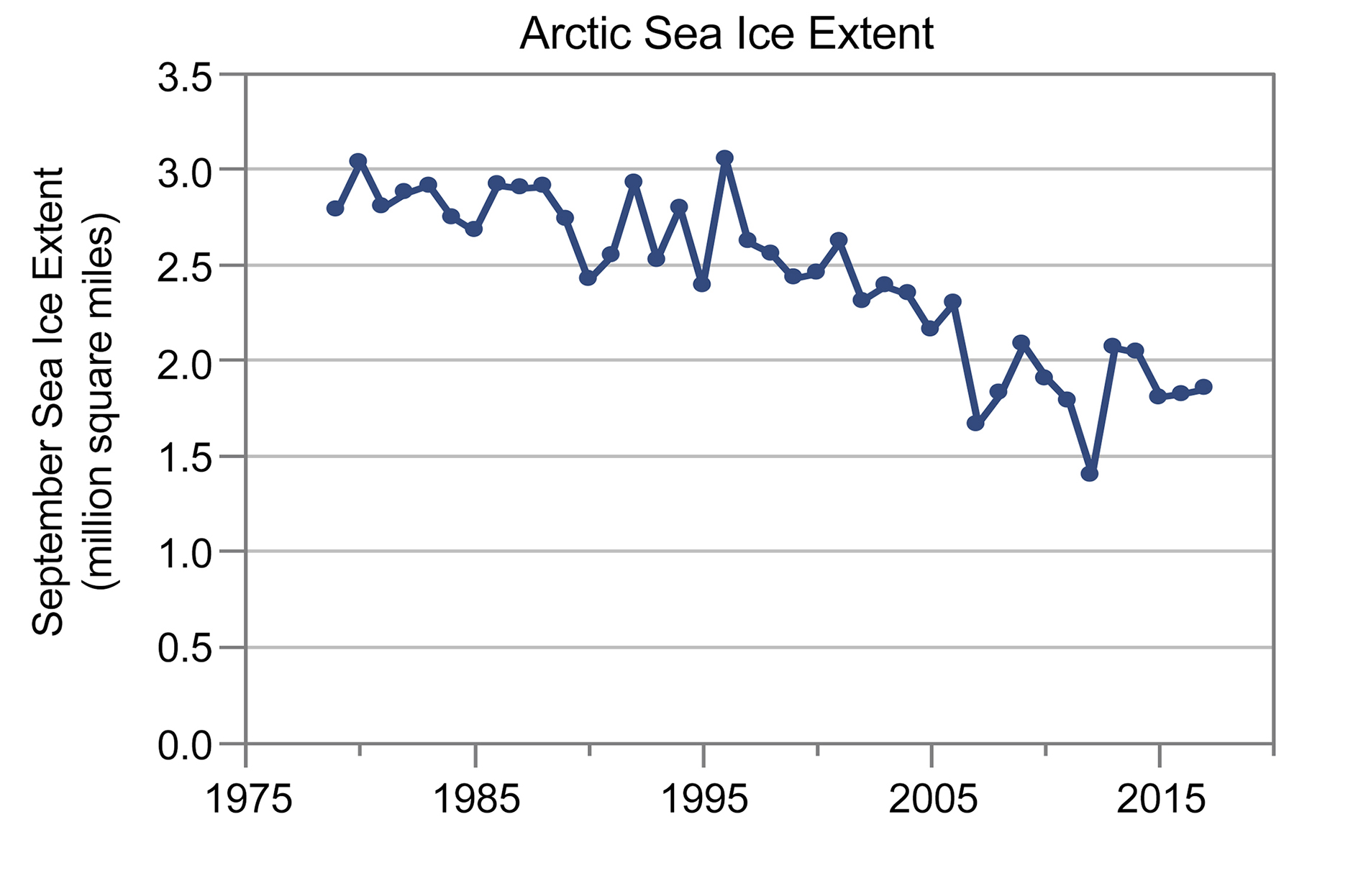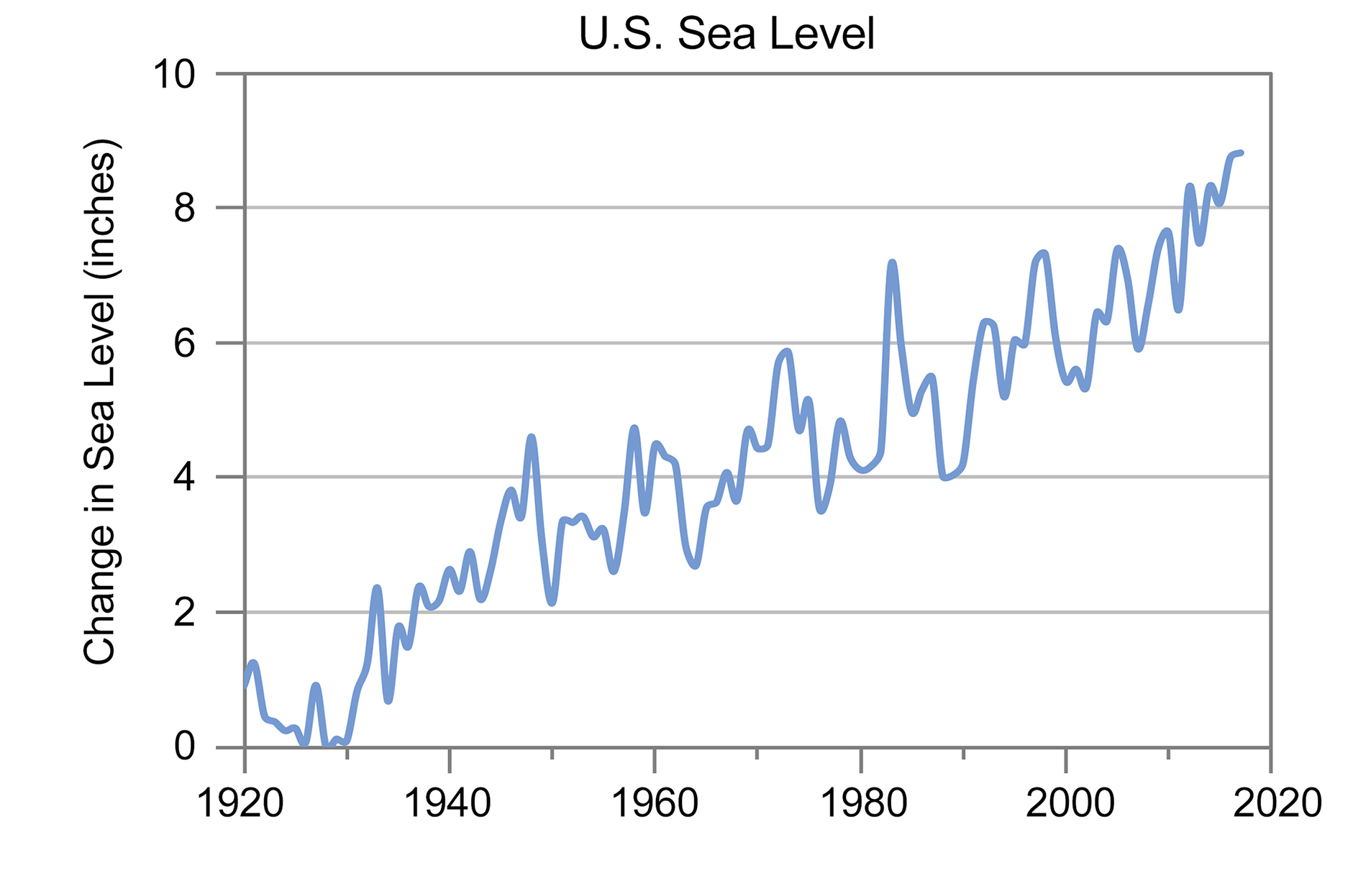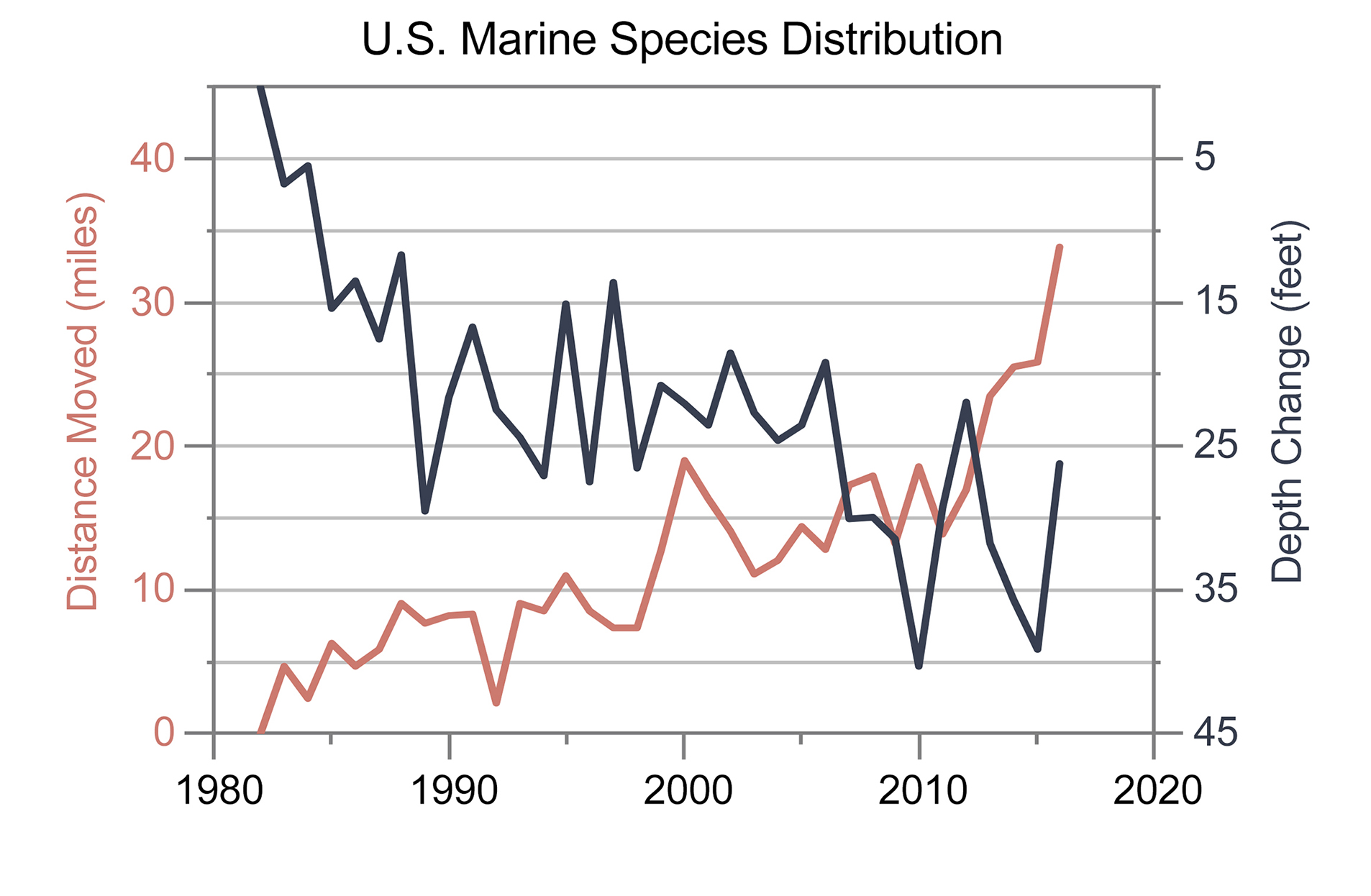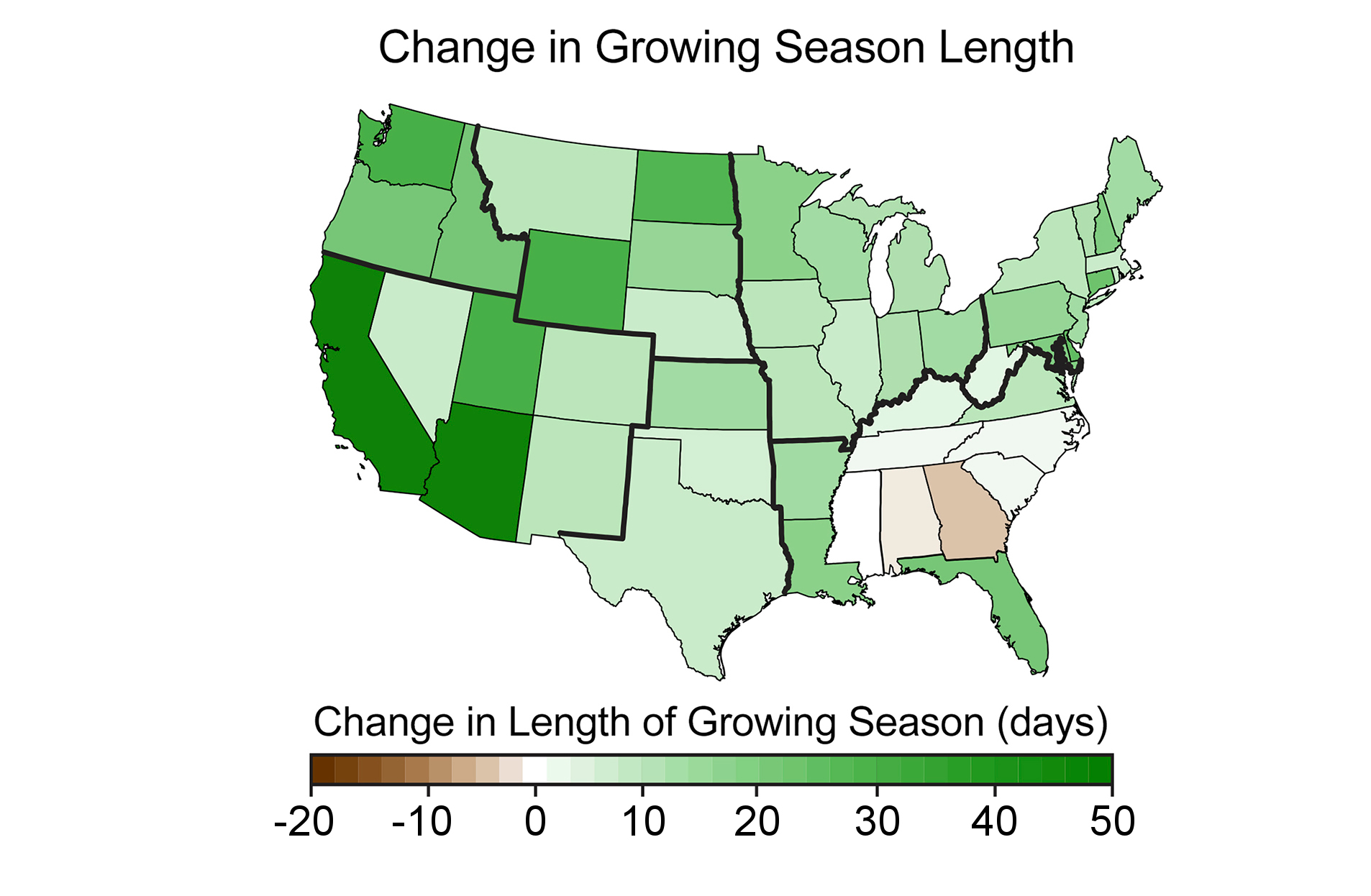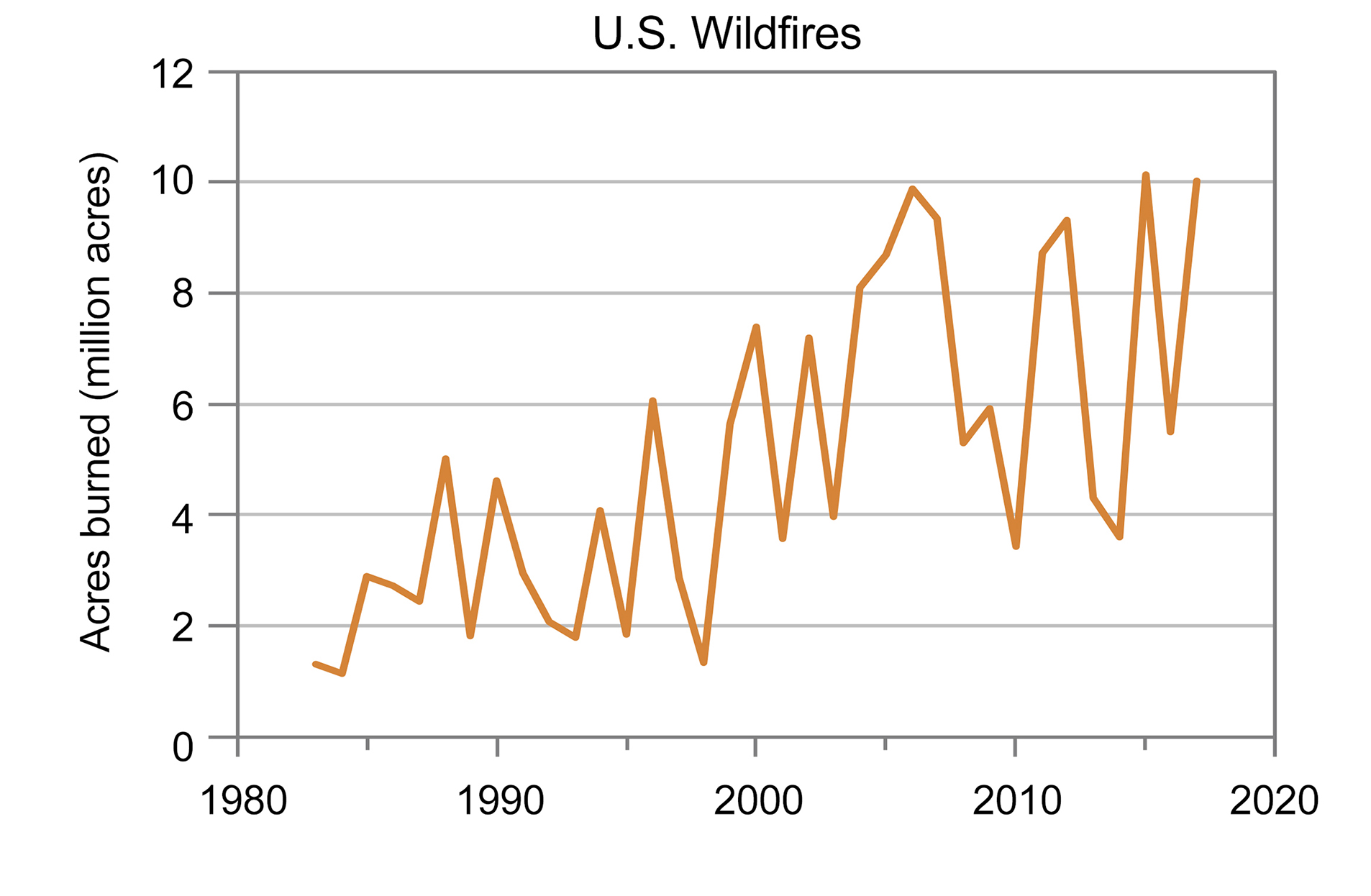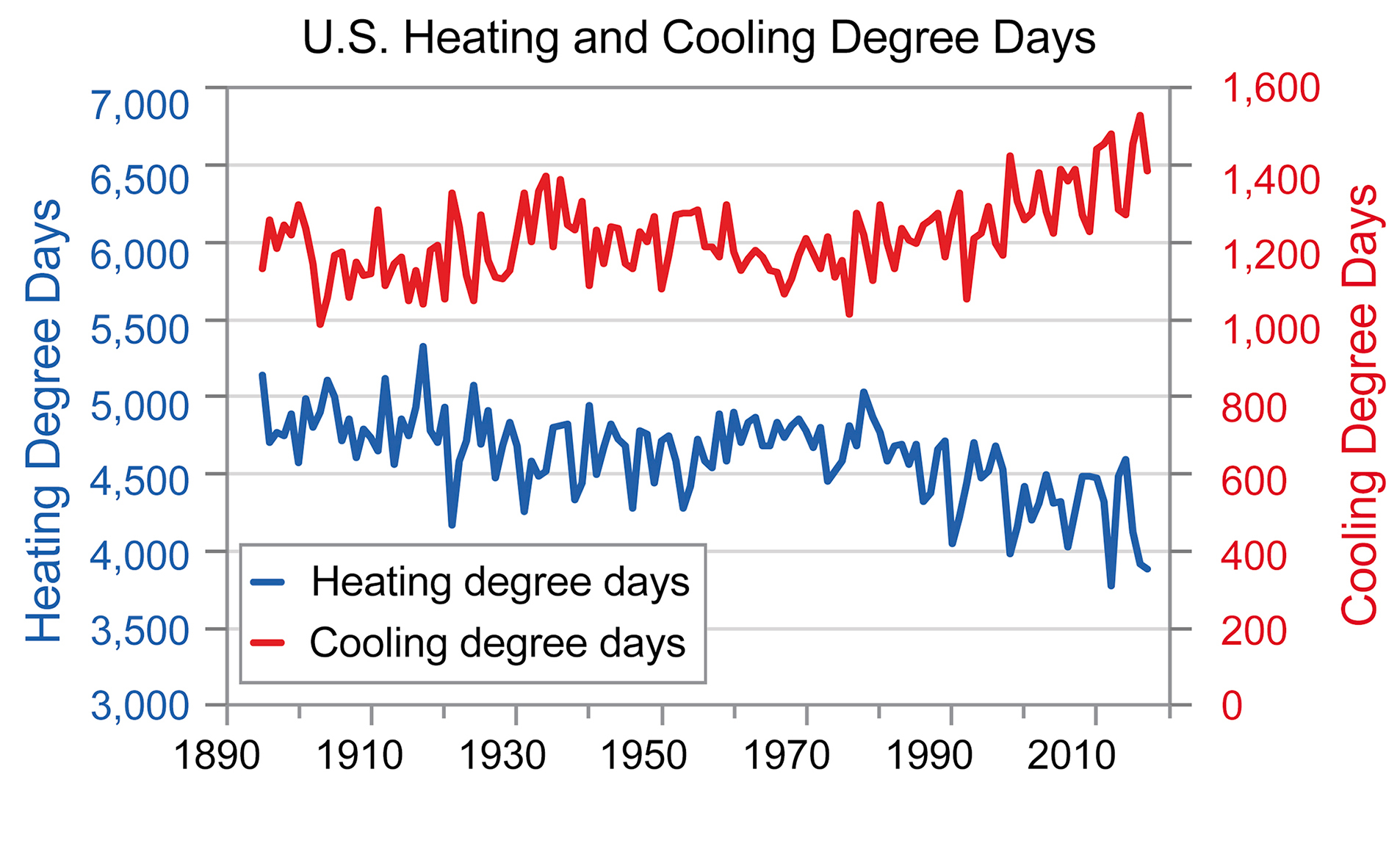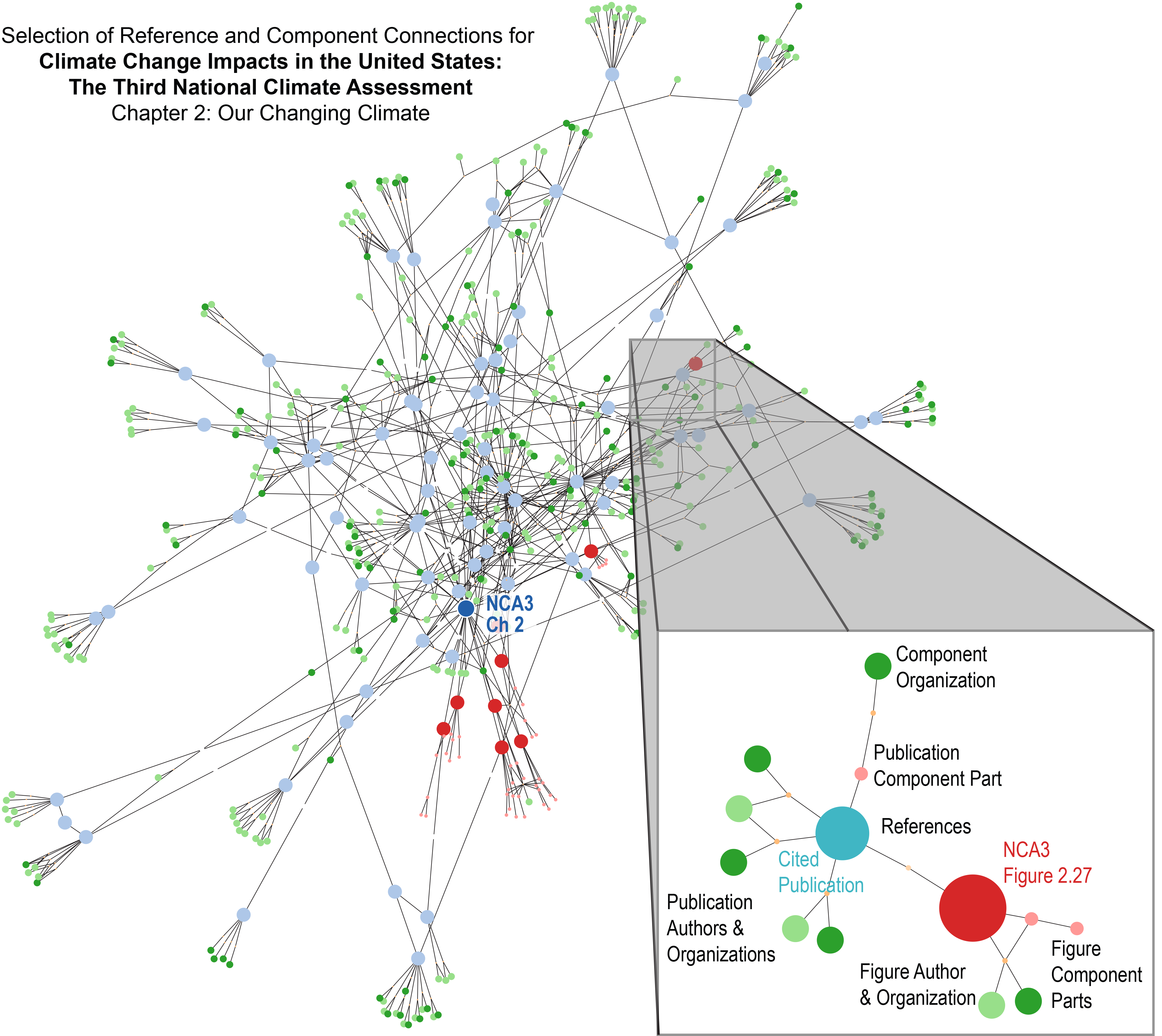Scenario Products
Scenarios are coherent, internally consistent, and plausible descriptions of possible future states of the world. Scenarios may be quantitative, qualitative, or both. The components of a scenario are often linked by an overarching logic, such as a qualitative narrative of how the future may evolve.
Overview
The USGCRP is mandated to “assist the Nation and the world to understand, assess, predict, and respond to human-induced and natural processes of global change.” To fulfill this mandate, the NCA evaluates risks that climate and global change pose to the United States. This entails addressing specific questions about what is at risk in a particular region or sector and how it might be affected in different potential futures. Scenarios that span a range of plausible future changes in key environmental parameters, such as weather and climate extremes, sea level, population, and land use, can help carry this out. USGCRP has therefore coordinated the development of a set of scenario products, accessible at https://scenarios.globalchange.gov/, to support NCA4 development. Specifically, NCA4 authors have been provided with a suite of high-resolution (downscaled) scenario products for the United States, covering (at least) the entire 21st century, to support chapter development.
Selection of Representative Concentration Pathways
NCA4 authors have grounded their assessment in an analysis of the widely-used scenarios termed “Representative Concentration Pathways,” or RCPs, that form the foundation for the majority of recent coordinated global climate model experiments. (RCPs are also discussed in this report’s Front Matter.) Consistent with previous NCAs, NCA4 relies in part on climate scenarios and modeling efforts generated for the Intergovernmental Panel on Climate Change (IPCC) assessments. In May 2015, USGCRP released a memo outlining the decisions regarding climate-related scenarios and the rationale around them.2 Specifically, USGCRP decided to use the RCPs3,4 and associated model results from the Climate Model Intercomparison Project Phase 5 (CMIP5)5 that underpinned the IPCC 5th Assessment Report (AR5), completed in 2013–2014.
The CMIP model results, as driven by the RCP scenarios, have similarly become standard reference inputs for virtually all work in the United States and internationally concerning climate change science, impacts, vulnerability, adaptation, and mitigation. It is, therefore, reasonable, practical, and in line with the expectations of the research community for NCA4 to use the most recently available model outputs from CMIP5, associated with the RCPs. CMIP5 climate data were widely available during the development of NCA4; products from the next phase of the CMIP project (CMIP6) were not available in time to support NCA4.
USGCRP further decided that NCA4 would focus primarily on RCP8.5 and RCP4.5 for framing purposes, while also considering other scenario information where appropriate (for example, RCP2.6). These RCPs capture a range of plausible atmospheric concentration futures that drive climate models. RCP8.5 is the high-end scenario (high emissions, high concentrations, large temperature increase) in the IPCC’s AR5; it likewise serves as the high-end scenario for NCA4, similar to the use of IPCC’s 4th Assessment Report (AR4) Special Report on Emissions Scenarios (SRES) A2 scenario in NCA3.6 RCP4.5 is not the lowest scenario in AR5, but it is similar to the AR4 SRES low-end B1 scenario that was used in NCA3. RCP2.6 represents the low end of the range considered by AR5, but it also assumes significantly greater emissions reductions, even for current and near-term emissions, than previous low-end scenarios used by the IPCC. The range represented by RCP8.5 and RCP4.5, therefore, provides the most continuity and consistency with the IPCC scenarios used for framing purposes by the previous NCA3.
As simulated in CMIP5, all of the RCPs result in similar global temperature and sea level rise outcomes for the next few decades. However, by mid-century and beyond, differences between RCPs have a substantial effect on the climate and impact outcomes (see Ch. 2: Climate, Figure 2.2). The choice to focus on RCP8.5 and RCP4.5 for impacts, adaptation, and vulnerability analyses allows for an evaluation of near-term concerns for the nation, as well as a robust and wide range of longer-term outcomes relative to the present.
Because RCPs intentionally focus on the outputs that are in turn fed into climate models (namely atmospheric concentrations), a wide range of future assumptions about underlying socioeconomic conditions, both at the global and national scale (for example, population growth, technological innovation, and carbon intensity of the energy mix), could plausibly be consistent with each of the RCPs used in NCA4. For this reason, further guidance on U.S. population and land-use assumptions was provided to authors, as discussed in the Products section of this chapter. Nevertheless, each RCP was developed by a separate modeling team;4 for illustration, some of the assumptions in those modeling runs include
The range of future global population projections within the RCPs falls within the range of the low and high United Nations population projections from 2003.
The range of global gross domestic product (GDP) projections within the RCPs falls within the range of the 90th-percentile range of GDP scenarios found in the literature available prior to publication of the RCPs.
RCP2.6, RCP4.5, and RCP6.0 represent intermediate scenarios from the literature, resulting in primary energy use of 750 to 900 EJ (exajoules) in 2100 or about double recent levels; RCP8.5 is a much more energy-intensive scenario.
Because of assumptions about future viability of carbon capture and storage (CCS) technologies, all scenarios use greater amounts of coal and/or natural gas than in the year 2000.
An important element of RCP2.6 is the use of bio-energy in combination with CCS, resulting in negative emissions by the end of century.
All RCPs assume increasingly stringent air pollution control policies.
Comparing outcomes under RCP8.5 with those of RCP4.5 (and RCP2.6 in some cases) not only captures a range of uncertainties and plausible futures but also provides information about the potential benefits of mitigation. Comparing outcomes under the two pathways shows the degree to which significant emissions mitigation at the global scale can avoid some impacts and inform adaptation choices to the risks that are present even at the low-end scenario. The scenario range allows for an assessment of impacts at a variety of temperature thresholds.
Products
Overview
As noted earlier, NCA4 authors were provided with a suite of high-resolution (downscaled) scenario products for the United States, covering at least the entire 21st century, to assist them in the development of their chapters (hosted at https://scenarios.globalchange.gov). These included
changes in the averages and extremes of key climate variables (for example, temperature and precipitation),
relative sea level rise along the entire U.S. coastline,
population change as a function of demographic shifts and migration, and
changes in developed land use driven by these population changes.
Authors were encouraged to use the provided scenario products to help ensure consistency in underlying assumptions and to improve the ability to compare and synthesize across chapters. Authors used these scenario products to frame uncertainty in future climate as it related to the regional and sectoral risks that were the focus of their chapters—both uncertainty as a result of considering multiple RCPs and uncertainty due to limitations in our understanding of key climate system processes or our ability to fully represent these processes in earth system models.
To better assist the author teams in meeting their needs, and to reduce the potentially large volume of underlying scenario products from which the authors could potentially draw, NCA4 authors were encouraged to think of the scenario products as being grouped into the following three USGCRP scenarios: “Lower,” “Higher,” and “Upper Bound” departures from current conditions (Table A3.1).
Table A3.1: USGCRP Scenarios
| Scenario Inputs | Lower Scenario | Higher Scenario | Upper Bound Scenario |
|---|---|---|---|
| temperature means/extremes | RCP4.5 ensemble mean | RCP8.5 ensemble mean | 95th percentile of RCP8.5 |
| precipitation means/extremes | RCP4.5 ensemble mean | RCP8.5 ensemble mean | 95th percentile of RCP8.5 |
| sea level rise | “Intermediate-Low” | “Intermediate” | “Extreme” |
| population | “lower” (SSP2) | “higher” (SSP5) | “higher” (SSP5) |
| development land use | “lower” (SSP2) | “higher” (SSP5) | “higher” (SSP5) |
For example, given this assessment’s emphasis on using a risk-based framework, authors were asked to consider low-probability, high-consequence climate futures. Addressing this potential future, in addition to more probable futures, is facilitated by considering the Upper Bound USGCRP scenario. These outcomes will often pose the greatest risks to society and thus must be considered in any comprehensive risk assessment.
Similarly, the authors were asked to consider how future trends in other critical, non-climatic stressors, including population growth and land-use change, may interact with climate change to exacerbate (or alleviate) climate-related risks. Authors have, therefore, been provided with scenarios of these additional drivers, grouped with the climate-related scenarios under the “Lower,” “Higher,” and “Upper Bound” USGCRP scenarios (see Ch. 17: Complex Systems for additional discussion on how non-climatic stressors can exacerbate climate-related risks).
Authors have used these scenario products to support a range of tasks within individual NCA4 chapters. Many chapters use scenario products for broad needs, such as general context-setting to illustrate a range of possible future outcomes in key drivers of risk and determinants of vulnerability. Others have applied them to bound the envelope of scientifically plausible future climate change in assessing regional or sectoral risks. Still others have used scenarios to place existing literature into the context of a consistent, coordinated set of possible future conditions in order to facilitate improved synthesis. All of these applications are valuable uses of these scenario products for both the NCA and its users.
Downscaled Climate Information
Driven by stakeholder feedback and input seeking information about potential future climate change at much finer spatial scales than is typically generated by the state-of-the-art global climate models (which have horizontal resolutions on the order of 100 km, or about 62 miles), NCA4 authors were provided with CMIP5 model outputs that had been downscaled to finer scales using the LOcalized Constructed Analogs (LOCA) methodology.7
The LOCA method is a statistical technique to downscale climate model output to a smaller spatial scale, providing a much finer geographical resolution for analysis. In the LOCA method, the local simulated climate model field for each day is matched to examples in historical observations that resemble the climate model spatial distribution, called analog days. Since historical observations are sufficiently dense to represent local features, the resulting dataset provides a realistic representation of the local variability suitable for many impacts analyses..
Previous methods that utilized the same basic approach identified a set of days (typically 30) that resemble the climate model field over a large region and produced the downscaled field through an optimal weighting of the entire set of analog days.8 The LOCA method improves on these earlier methods in several ways. First, the analog days are chosen separately for local regions, thus providing a more realistic choice of analog days at the local scale. Second, for most of the local region, the single analog day best matching the climate model simulation is used for downscaling, rather than averaging a set of days. This produces a better representation of extreme events.
The LOCA data include 32 CMIP5 models covering the 1950–2100 period, including the historical period of 1950–2005, as well as a higher scenario (RCP8.5) and a lower scenario (RCP4.5) for 2006–2100. The LOCA data include maximum temperature, minimum temperature, and precipitation at a daily resolution and at 1/16th-degree spatial resolution. The spatial coverage is the continental United States, southern Canada, and northern Mexico. LOCA data were not completely available for the U.S. Caribbean, Alaska, or Hawai‘i and U.S.-Affiliated Pacific Islands regions for NCA4, but extending LOCA to include these locations is an area of active research.
Sea Level Rise Scenarios
The Federal Interagency Sea Level Rise and Coastal Flood Hazard Scenarios and Tools Task Force, a joint task force of the National Ocean Council (NOC) and USGCRP, was charged with developing and disseminating future sea level rise and associated coastal flood hazard scenarios and tools for the entire United States to support coastal preparedness planning and risk management processes.
Two key subtasks of the overall Task Force effort were to 1) develop updated scenarios of global mean sea level (GMSL), and 2) regionalize these global scenarios for the entire U.S. coastline, to serve both as inputs into assessments of potential vulnerabilities and risks in the coastal environment and as key technical inputs into NCA4. In order to bound the set of GMSL rise scenarios for year 2100, the Task Force assessed the most up-to-date scientific literature on scientifically supported upper-end GMSL projections, including recent observational and modeling literature related to the potential for rapid ice melt in Greenland and Antarctica.
Figure A3.1: Global Mean Sea Level Rise Scenarios
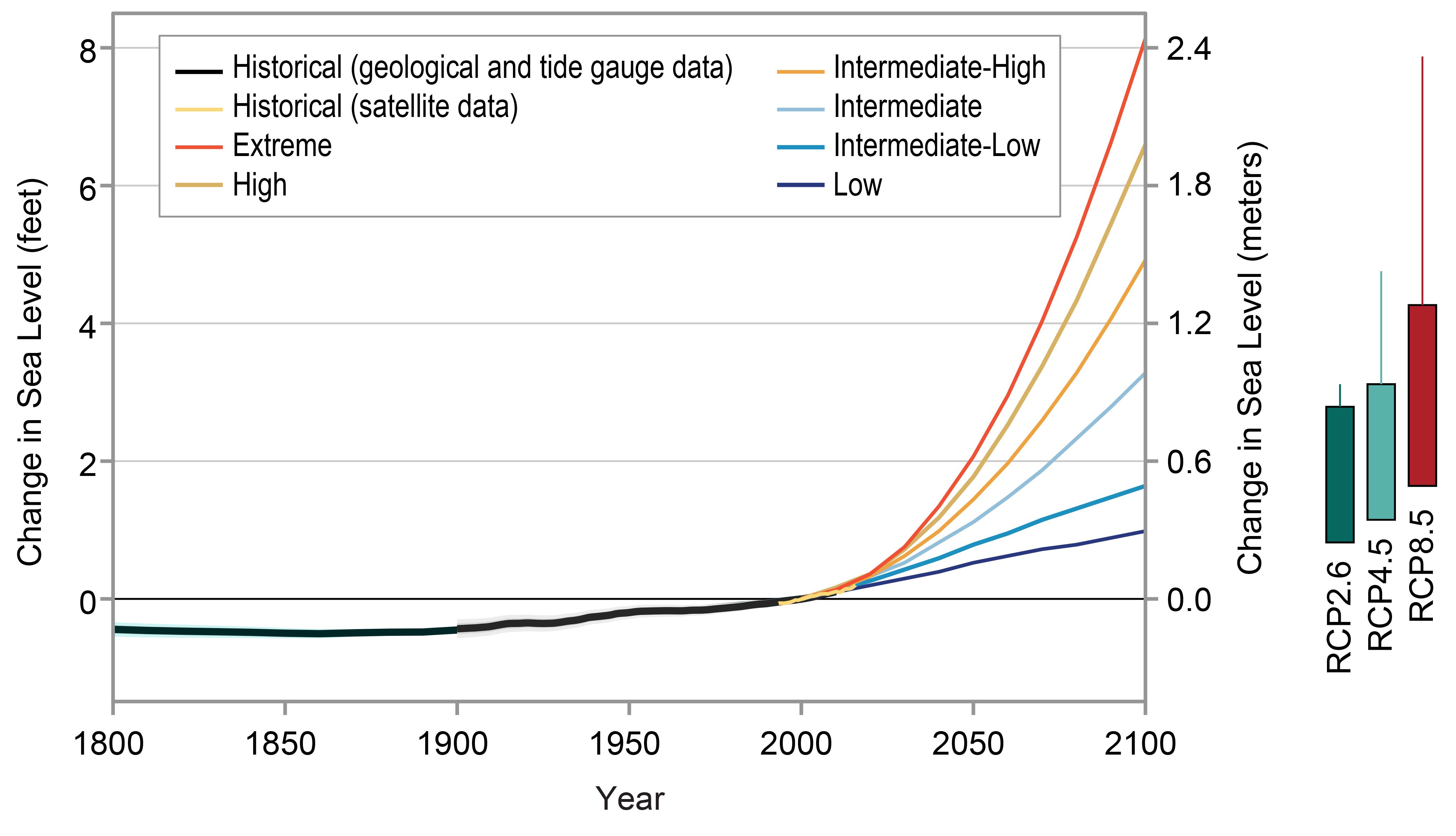
This figure was revised in June 2019. See Errata for details: https://nca2018.globalchange.gov/downloads
This projected GMSL range was discretized into six GMSL rise scenarios at 0.5-meter increments (Low, Intermediate-Low, Intermediate, Intermediate-High, High, and Extreme, which correspond to a GMSL rise of 0.3 m, 0.5 m, 1.0 m, 1.5 m, 2.0 m, and 2.5 m, respectively, by 2100). These were then used as the basis for deriving relative sea level (RSL) rise on a 1-degree grid covering the coastlines of the U.S. mainland, Alaska, Hawai‘i, the U.S. Caribbean, and the U.S.-Affiliated Pacific Islands regions, as well as at the precise locations of available tide gauges along these coastlines. The RSL values account for key factors important at regional scales, including 1) shifts in oceanographic factors; 2) changes in Earth’s gravitational field and rotation, and flexure of the crust and upper mantle due to melting of land-based ice; and 3) non-climatic factors mostly associated with vertical land movement (subsidence or uplift) due to glacial isostatic adjustment (the continuing vertical movement of land in response to the melting of the ice cover from the last ice age), sediment compaction, and groundwater and fossil fuel withdrawals.
These global and regional/local scenario products are available for the 2000–2100 period at 10-year intervals and over 2100–2200 at a coarser temporal resolution (the scenario values are provided for 2120, 2150, and 2200).
Population and Land-Use Scenarios
Population and land-use scenarios for NCA4 have been developed through the U.S. Environmental Protection Agency’s (EPA) Integrated Climate and Land Use Scenarios (ICLUS) effort. ICLUS explores future changes in human population and developed land use for the contiguous United States. These projections are broadly consistent with peer-reviewed storylines of population growth and economic development that are now widely used by the climate change impacts community.10 Specifically, the different population and land-use change scenarios stem from global population and urbanization assumptions underlying two different future trajectories from the Shared Socioeconomic Pathways (SSPs) effort:11 SSP2, which represents a business-as-usual trajectory, similar to the U.S. Census population projection (out to 2060), and SSP5, which represents a trajectory with higher fertility and higher net migration into the United States.12 At the global scale, socioeconomic assumptions under SSP2 are broadly consistent with the concentration pathway and resultant radiative forcing for RCP4.5, whereas the socio-economic assumptions under SSP5 are more consistent with RCP8.5.
ICLUS data (version 2) outputs have been made available to NCA4 authors (including training webinars) and consist of both population and land-use projections. Two ICLUS projections are provided. These are based on the 2010 U.S. Census and use fertility, mortality, and immigration rates from the Wittgenstein Centre to project decadal population to 2100, consistent with the demographic assumptions of the SSP2 and SSP5 socioeconomic scenarios, respectively.
These ICLUS population projections are used as inputs to a land-use model, which spatially allocates five residential land uses (exurban-low, exurban-high, suburban, urban-low, and urban-high) as well as commercial and industrial uses.
